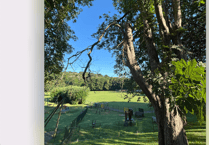A NEW strategy to protect three important nature reserves, including Dawlish Warren, has been agreed by three local councils.
East Devon District Council, Teignbridge District Council, and Exeter City Council have formally signed up to the new South East Devon Wildlife Joint Habitats Sites Mitigation Strategy following full approval by each council.
Developed by Footprint Ecology, the strategy to protect the Exe Estuary, East Devon Pebblebed Heaths, and Dawlish Warren builds on the previous Strategy 2016-2025.
It was developed in partnership with Natural England, the Pebblebed Heaths Conservation Trust, the Exe Estuary Management Partnership, Devon Wildlife Trust, RSPB, and others, setting out a framework of mitigation measures funded through developer contributions for new housing developments within 10 km of the protected sites.
These nature reserves carry the highest conservation designations in the UK—Special Protection Areas (SPAs), Special Areas of Conservation (SACs), and Ramsar sites—offering crucial protection for a wealth of wildlife.
Without action, increased recreational use from new developments could harm the wildlife and habitats these sites were designated to protect.
The Strategy delivers a comprehensive set of measures.
These include wildlife education and patrols with wardens to guide visitors to reduce their impact.
Facilities including paths, signs and parking areas and being upgraded.
Safe spaces for overwintering birds were created and are being maintained on the Exe Estuary and around Dawlish Warren.
Ongoing monitoring will take place with regular checks and updates to ensure the plan stays effective.
East Devon, Teignbridge, and Exeter Councils each formally adopted the strategy this year, cementing a cross-boundary commitment to protecting South East Devon’s wildlife.
Cllr Gary Taylor, Executive Member for Planning and Building Control, Teignbridge District Council: ‘By working together, we’re delivering smarter, more effective protection across boundaries and ecosystems.’





Comments
This article has no comments yet. Be the first to leave a comment.